The Effect of Planting Date on Yield Across PreceonTM Smart Corn System* Products
May 30, 2025
TRIAL OBJECTIVE
- Planting on the optimal date can help cash crops achieve their maximum yield potential.
- Planting early can benefit corn by avoiding flowering during the hottest part of the year and could allow time for a replant if necessary, but it usually involves planting into cooler-than-ideal soil conditions.
- Planting later typically leads to planting into ideal soil conditions, but it can also mean flowering at the hottest part of the year unless planting much later than is optimal.
- For Preceon™ Smart Corn System products, planting very early can lead to lower ear heights. This demonstration strip trial looks at yield, ear height, plant height, and other characteristics of corn planted on eight different dates.
RESEARCH SITE DETAILS

- The strip-trial was arranged in strip plots with two corn products on eight different planting dates in 2024.
- Corn products:
- PR112-50RIB, 112 RM, a SmartStax® RIB Complete® corn blend
- PR116-20RIB,116 RM, a VT Double PRO® RIB Complete® corn blend
- Planting Dates (PD):
- March 18
- April 3
- April 15
- May 1
- May 13
- May 27
- June 10
- June 25
- Corn products:
- The trial was strip-tilled with a base fertilizer application of 22 lb of nitrogen (lb N/acre), 70 lb of phosphorus (lb P/acre), and 25 lb of sulfur (lb S/acre).
- Weeds were controlled with herbicides throughout the season.
- Total weight, test weight, and moisture content were collected with a plot combine to calculate yield per acre. Two yield strips were averaged from each corn product and planting date. Four measurements from each combination of corn product/planting date were averaged for plant height and ear height.
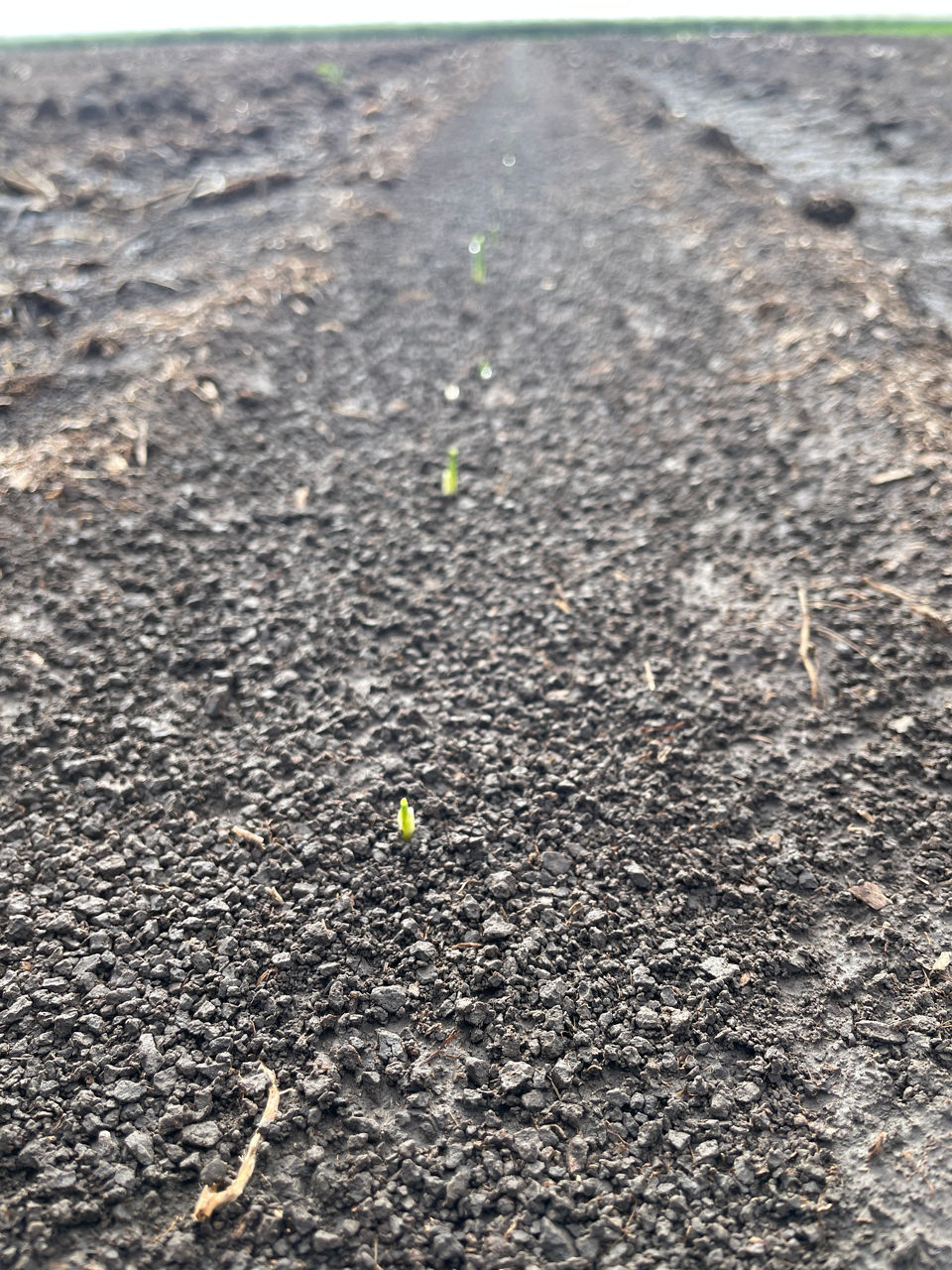
UNDERSTANDING THE RESULTS

- All corn planted on the earliest two planting dates, March 18 and April 3, required over 30 days to emerge, while corn planted on all the later dates required 20 days or less. This difference in days to emerge may have been caused by the lower soil temperatures on the first two planting dates.
- Corn planted on the earliest two dates also needed more days to flowering and black layer than corn planted on the later dates.
- The number of GDUs to emergence increased for corn planted on the latest two planting dates, June 10 and June 25, even though the days to emergence was the lowest of any planting date in the study. This likely occurred because the air temperature on these planting dates caused the corn to accumulate GDUs very quickly.
- The 116 RM corn product planted on May 27, and both corn products planted on June 10 and June 25 did not reach black layer before a killing freeze.
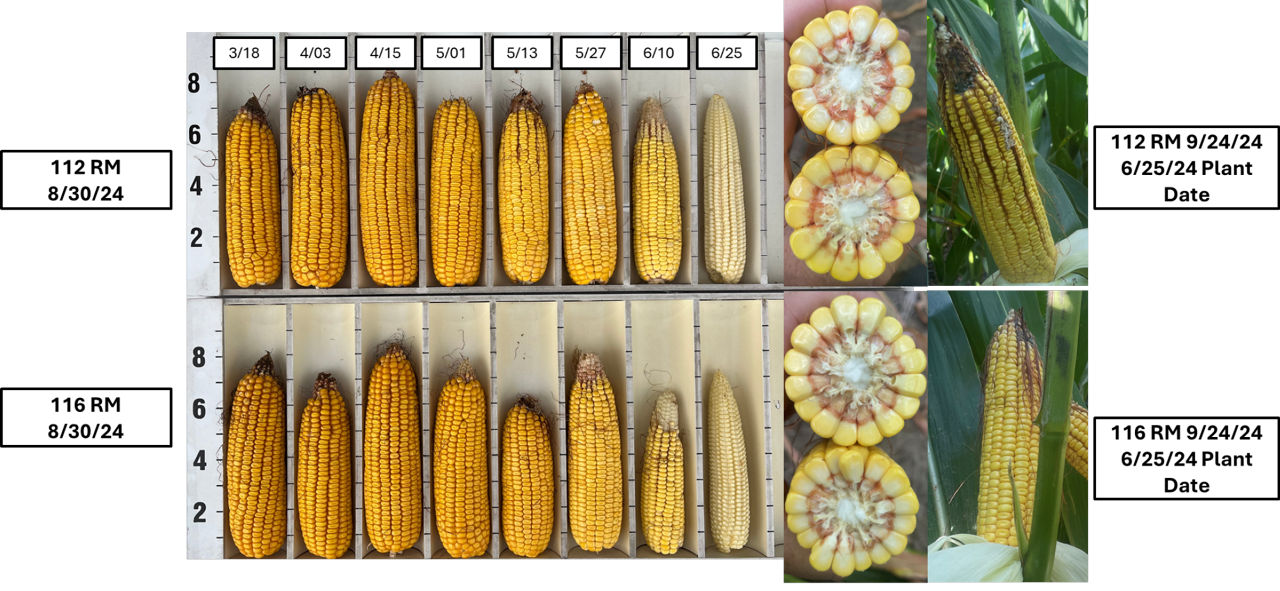
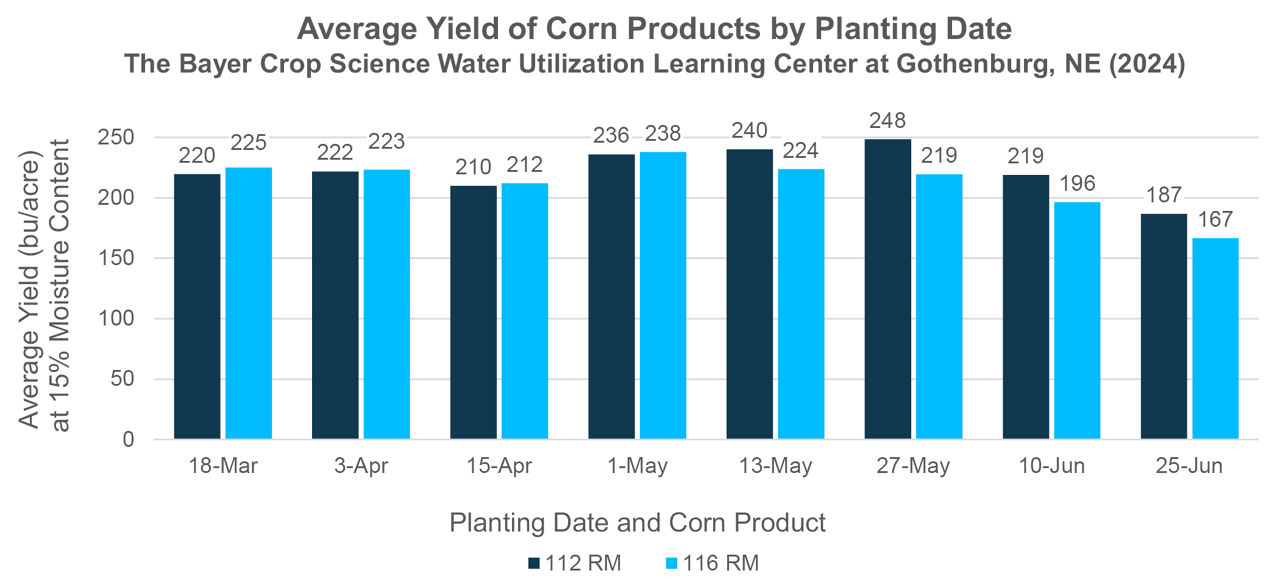
- The average yields of the two corn products were most similar when planted from March 18 to May 1.
- The 116 RM corn product had a lower average yield than the 112 RM product when the products were planted on May 13th or later.
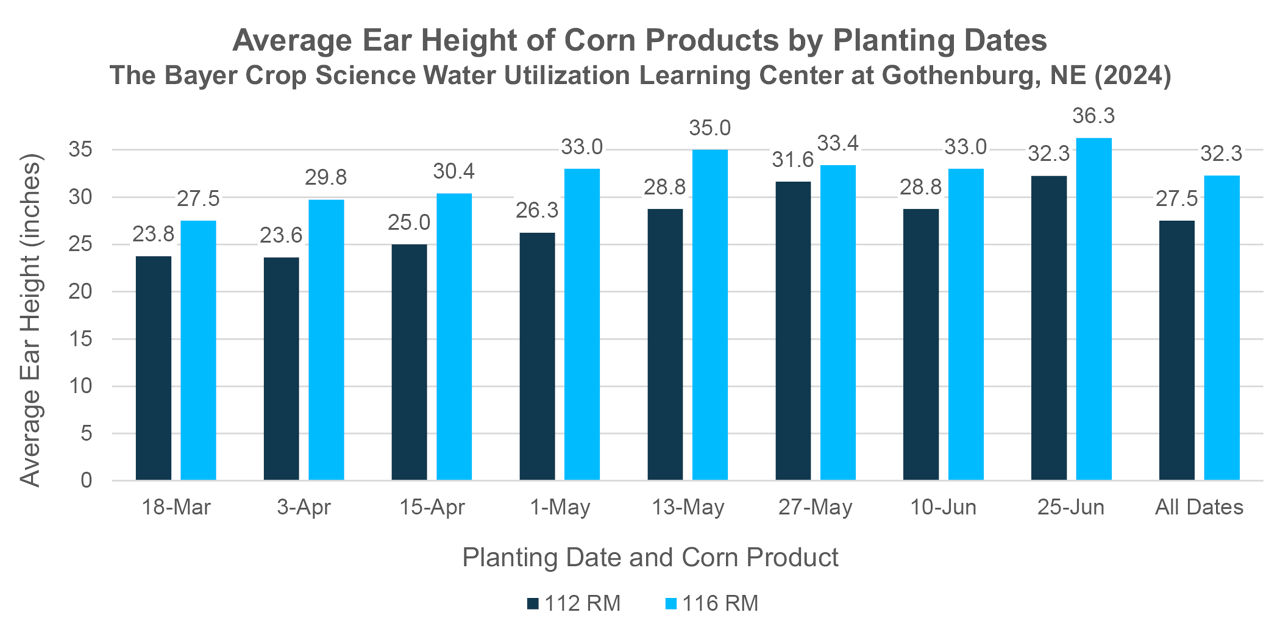
- When ear height was averaged across all planting dates, the 116 RM product had an average ear height of 32.3 inches and the 112 RM product had an average ear height of 27.5 inches, a 4.8 inch difference in average ear height.
- The average ear height was greater for both products when corn was planted on the last four dates (112 RM = 30.4 inches; 116 RM = 34.4 inches) compared to the first four planting dates (112 RM = 24.7 inches; 116 RM = 30.2 inches).
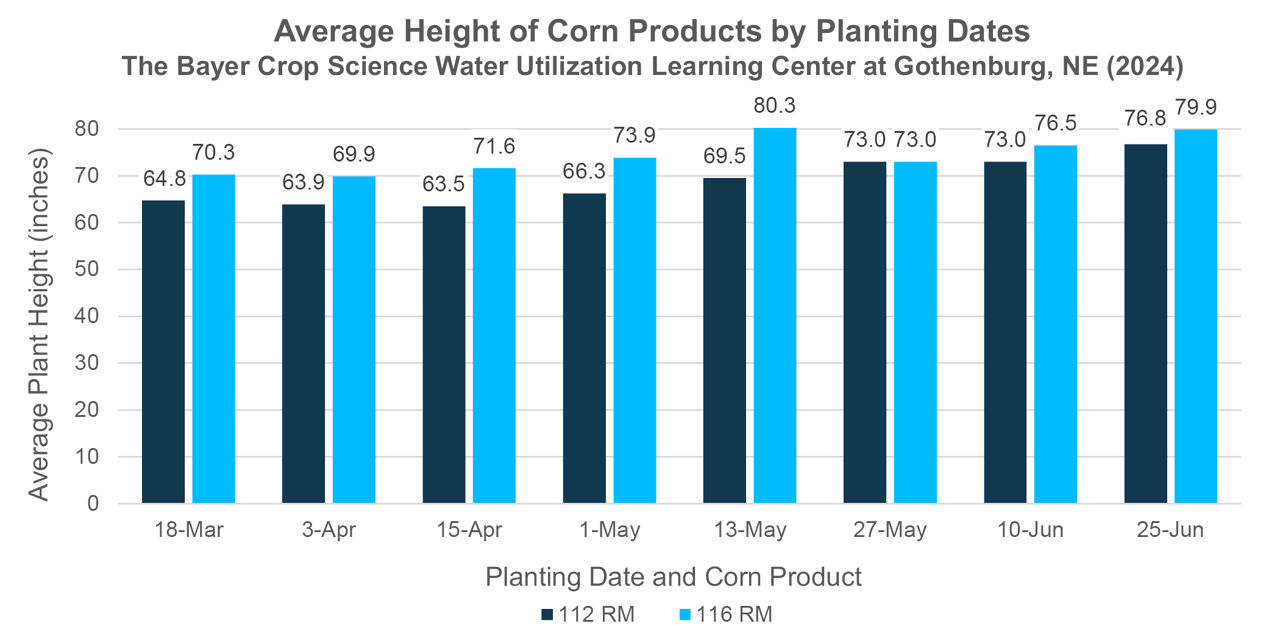
- Later planting dates (May 13 to June 25) had taller plants by an average of about 8 inches for the 112 RM corn product and by about 6 inches for the 116 RM product.
KEY LEARNINGS
- The two largest average yields were produced on the May planting dates for both the 112 RM corn product (248 bu/acre) and 116 RM corn product (238 bu/acre).
- This trial did not find a yield advantage to planting earlier than May at Gothenburg, NE in 2024.
- In this trial, later planting dates tended to have larger average ear heights and taller average plants, but all planting dates had ear heights that matched or exceeded the target ear height for both products.
1214_561900